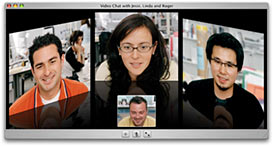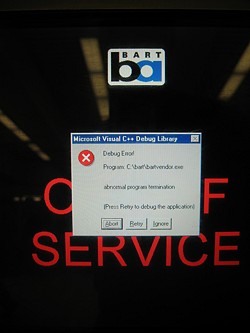Tiger Watching
Published 21 years, 1 week pastOver at Daring Fireball, John Gruber pointed out that Tiger‘s Dashboard isn’t quite as much of a Konfabulator rip-off as it first appeared. His primary point was that the principles in Dashboard and Konfabulator aren’t anything new, and haven’t been for a couple of decades. However, it was his highlight of a comment by Dave Hyatt that really caught my eye. Dave said:
I wanted to blog briefly to clear up what the widgets actually are written in. They are Web pages, plain and simple (with extra features thrown in for added measure). Apple’s own web site says “build your own widgets using the JavaScript language”, but that’s sort of misleading. The widgets are HTML+CSS+JS. They are not some JS-only thing.
So… with the skills I already possess, I can create my own Dashboard gadgets, as can thousands of similarly skilled designers? How cool is that? I’m already itching to get my hands on the Dashboard developer information, so I can find out what these things can do and how I can bend them to my will. As a trivial example, if I can get information via SOAP, and I can’t imagine why I wouldn’t, then I can use the weather data service I recently linkblogged to grab the current and next-seven-days’ forecast for any location in the United States, not to mention present the resulting information in a really beautiful way via the Dashboard. Since the service returns results for latitude/longitude coordinates, it would be best crossed with a dataset correlating city names to lat/lon coordinates. That shouldn’t be terribly difficult.
In fact, Web services in general could get a huge boost from the Dashboard. Search gadgets for Amazon, Google, and any of a thousand other sources would be a snap. Infoaggregators, pulling in data from various sources into one place, would become very simple. Creating point-and-click editors for OS and application preferences should be trivial. You’d also have the ability to grab information about the machine itself (memory usage, disk usage, CPU activity, top listings, etc.) and present it in truly useful and beautiful ways. The possibilities are nearly endless, and my few fairly pedestrian ideas likely don’t even begin to touch on what can be done by a really creative programmer.
That’s especially true if, extrapolating from Ian Hickson‘s recent comments, the Web Core contains XFormsWebForms 2.0 support, thus making advanced controls available in Dashboard gadgets.
Then there’s iChat AV. I’d like to see it permit audio chatting with AIM users, as opposed just video chats, but then I think that should have been possible already. What really got me stoked was (of course) the gratuitious eye candy.  As Apple says:
As Apple says:
iChat for Tiger introduces a new kind of interface for video conferencing. In its three-dimensional view, your buddies seem more like they’re in the room with you, making it easier to follow the conversation. Their images are even reflected in front of them, just as if they were sitting around a conference-room table.
Well, that’s true if you often hold meetings around conference-room tables made entirely of smoked glass. What Apple really needs to add to iChat is the ability to pick different surfaces for the “tabletop” beneath the video windows. They could include a highly polished, dark mahogany surface, for example, to really convey that upscale conference room feeling. Or a reflective granite surface, for a feeling of solidity. Hell, how about having the video portals hang above rippling water, with the video images reflected in the waves? It seems like Core Image has all the pieces necessary to make any of those things happen, and then some.
For that matter, making it simple to drag an image file onto that tabletop and have it mapped on seems a snap. You should be able to put your company logo there, embossed or glazed or otherwise applied to the tabletop, whatever its base surface effect. Basically, you should be able to make the tabletop look even more killer than it already does. Why not? If you’re going to include major eye candy, then no sense holding back.
Addendum: in the comments, Jason Lustig pointed out something I failed to mention, which is that the tabletop is good for much more than just awesome visual effects. It also makes a great shared workspace, a place where one participant could drop a file for everyone else to pick up. As he put it, “just like if you were passing out sheets at a real meeting!”. Exactly—and, of course, the document could even resemble a real document by generating a thumbnail of the document’s actual appearance, and mapping that onto the virtual sheet on the tabletop. Whee, more eye candy! I hope the Apple programmers add that ability to iChat before Tiger is released.
Add things like Automator, and this definitely looks like an OS upgrade well worth buying. I really hope that “the first half of 2005” means “in January, but we wanted to hedge our bets”.
